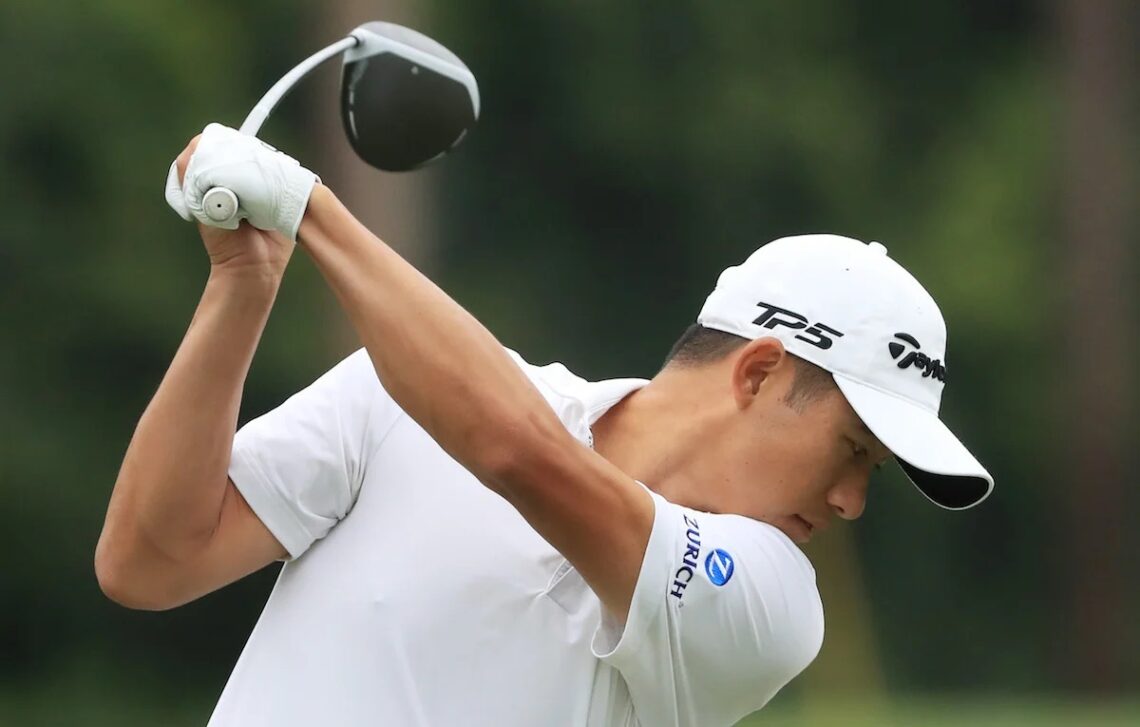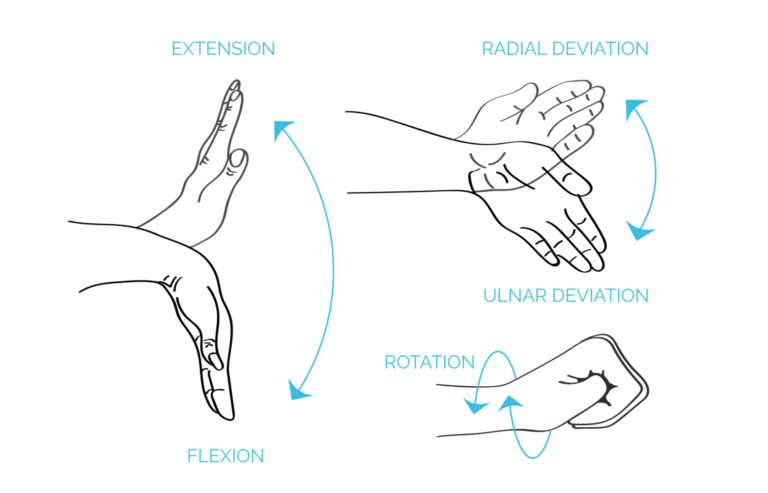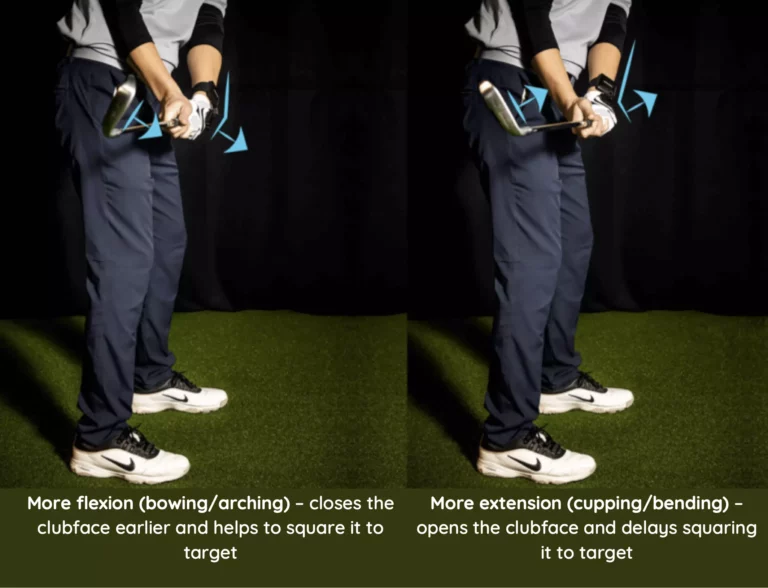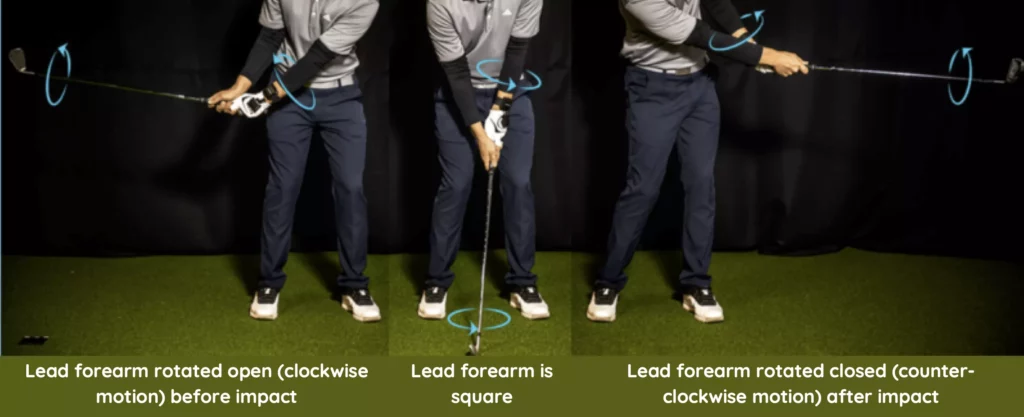
Role of Wrist Angles in the Golf Swing
Motions That Influence Wrist Angles
There are 3 main ways in which your wrist moves:

- Flexion/Extension – also called Bowing/Cupping, Arching/Bending the wrist
- Radial/Ulnar deviation – also called Cocking/Uncocking the wrist
- Rotation – global rotation of the forearm
Lead Wrist Flexion/Extension Closes and Opens the Clubface
PLAYER SENSOR
PRO SENSOR
Wrist flexion (bowing/arching) and extension (cupping/bending) are the motions that close and open the clubface. Extension opens the clubface, flexion closes the clubface. The more control over flexion/extension you have, the better you will control the clubface and the shot direction.
The most common problem for amateurs is having too much lead wrist extension at the top and during the downswing, which leads toan open clubface and slicing.

Radial/Ulnar Deviation is the Amount of Wrist Cock
PLAYER SENSOR
PRO SENSOR
Radial/Ulnar deviation is often called cocking and uncocking. This motion is an important source of power in the swing. However, it is also one of the most misunderstood parts of the swing. On video, it looks like tour players are adding wrist cock during downswing. Many amateur players try to mimic tour players, adding wrist cock in hopes of increasing their lag and distance.
However, 3D wrist data shows that most tour players are not adding massive amounts of wrist cock during downswing, but are actually keeping it constant or decreasing it. This happens because radial/ulnar deviation is a “coupled” motion with extension/flexion. The more you add radial deviation, the more the wrist extends, which opens the clubface and makes it harder to control.
Want clear benchmarks for wrist motion? Click HERE!

Rotation is Important for Squaring the Clubface
PLAYER SENSOR
PRO SENSOR
Rotation is a key motion in your swing, responsible for closing the clubface as it approaches impact with the ball. Not enough rotation before impact can leave the clubface open, resulting in slices that push the ball to the right. Too much rotation will close the clubface, resulting in the ball pulling left.
The HackMotion sensor’s 3D data shows that tour players are significantly rotating through impact, contrary to the belief that they have a minimal amount of rotation. The main difference for tour players is that they rotate consistently – repeating the same amount of rotation in each swing. Pro golfers match rotation with flexion/extension, squaring the clubface. Using the HackMotion sensor, you can track your amount of rotation, keeping it consistent from swing to swing.

Short Game and Putting
PLAYER SENSOR
PRO SENSOR
Wrist angles are also crucial for the short game. In pitching/chipping, understanding how the clubface behaves helps create different ball flight trajectories and spin levels. HackMotion also measures short game shots.
In putting, every degree of wrist angle change can influence the clubface. Consistency in your wrist angles is key for consistency in putting. Read more about using the HackMotion Sensor for putting!
All of our information is based on carefully analyzed pro player data, developed together with leading golf instructors.
How Measuring Wrist Angles can Help you Improve
HackMotion allows you to precisely measure and optimize wrist motion. After each swing, you get both precise measurement and audio feedback, allowing you to track progress from swing to swing and from lesson to lesson. Data can be compared to previous swings and to tour players to better understand what you want to work on. In the next post, you will learn how lead wrist extension/flexion influences the club and the clubface as well as common poor lead wrist mechanics.

